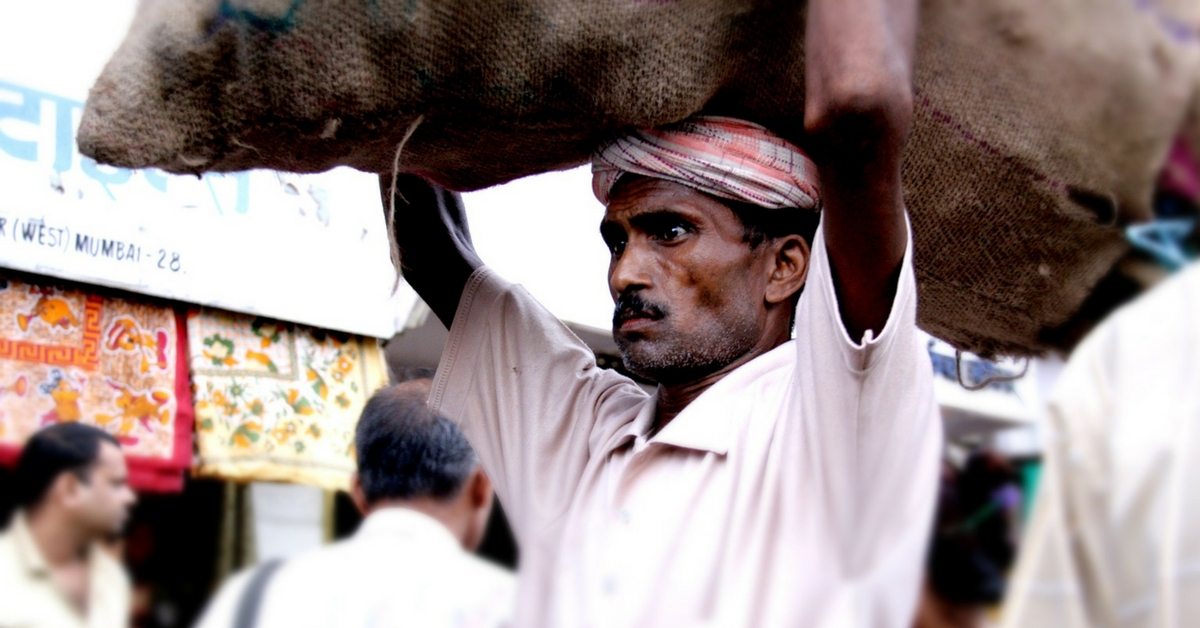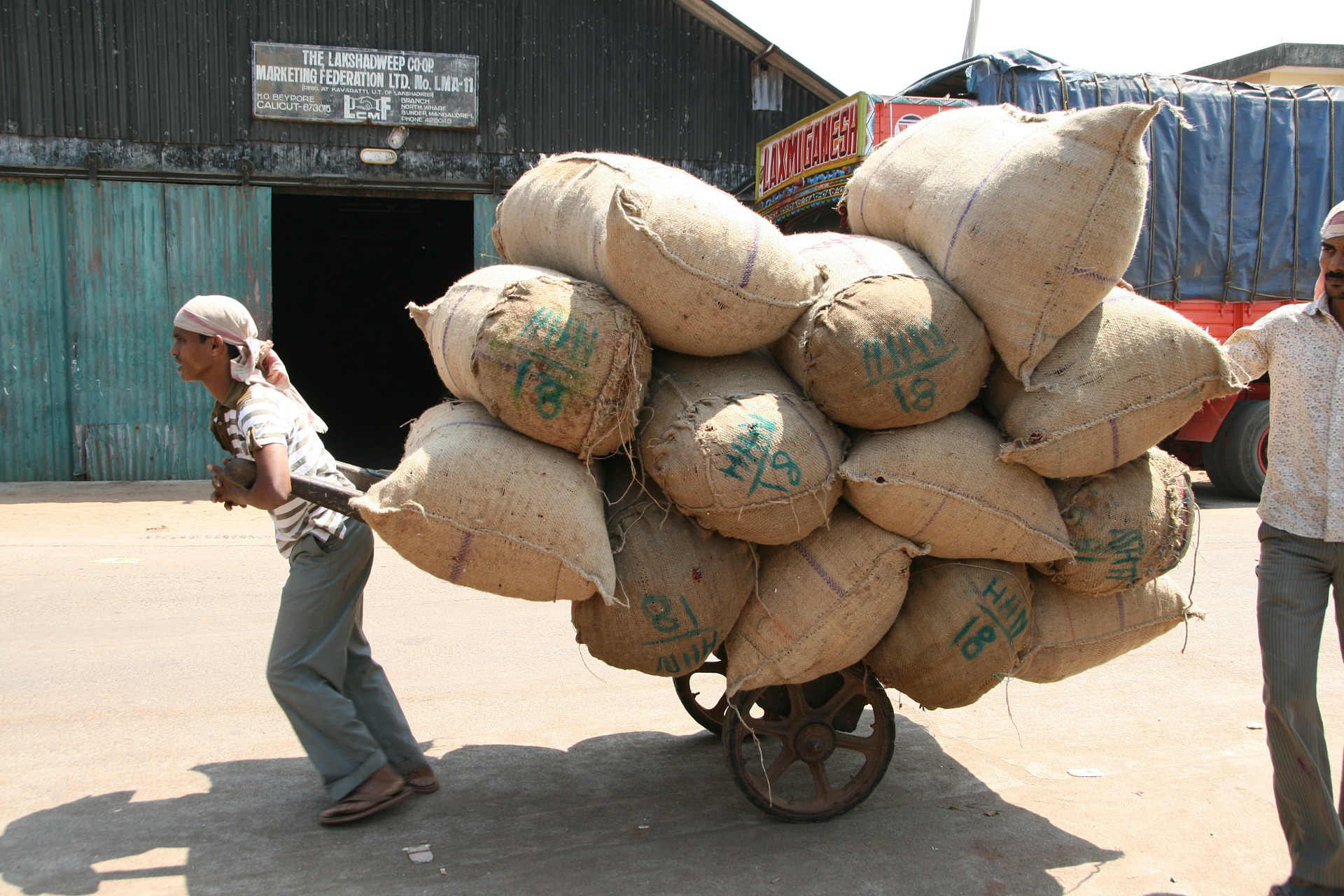TBI Blogs: From Increased Budgets to New Schemes – How the Govt Is Working for Labour Welfare in India
In a country with as large a workforce as India, Labour Welfare is a very important issue that needs adequate attention. Here’s how the government has apportioned funds and various schemes for labour welfare and safety in the country.

In a country with as large a workforce as India, Labour Welfare is a very important issue that needs adequate attention. Here’s how the government has apportioned funds and various schemes for labour welfare and safety in the country.
In his budget speech, the Finance Minister announced that the government is “keen on fostering a conducive labour environment wherein labour rights are protected and harmonious labour relations lead to higher productivity”. With this in mind, the government aims to undertake some legal reforms centered around wages, industrial relations, social security and welfare, and safety and working conditions.
The speech also made a mention of the Payment of Wages (Amendment) Bill, 2017, which was eventually passed by both Houses a few days after the Budget. That Bill had less to do with labour welfare and more with the digitization push of the government as it merely empowered employers to pay the workers either in cash, through cheques, or bank deposits. What the speech didn’t mention were reforms like the Factories (Amendment) Bill, 2016, which arbitrarily increased the overtime work limits set in the original Act, with no commensurate improvement in the monitoring mechanism to prevent the exploitation of workers.
Overview
Since 2014, the overall allocation for the Labour and Employment Ministry has seen an upward trend. This is in consonance with the government’s narrative of ‘Make in India’, skill development, push for entrepreneurship, etc. Despite this, some important components have seen a consistent retrogression (in real, if not in monetary terms), the most important being employment generation and worker safety, with 2016 being a particularly damaging year marked by incidental unemployment caused by demonetization and many lives lost in mine accidents.
| 2014-15 | 2015-16 | 2016-17 | 2017-18 | |
| Budgetary Allocation for Labour and Employment Ministry (In crores) | 5608.33 | 5361.37 | 6242.6 | 7188.38 |
The budgetary allocation in 2016-17 and 2017-18 can be divided among nine major heads, as depicted below:

Labour Statistics
Recent and accurate data on labour-related issues and trends forms the backbone of planning for labour welfare. This is one area that has remained continuously neglected. Take for instance the Directorate General for Factory Advice Services and Labour Institutes, which is responsible for overseeing the Occupational Health and Safety of Workers in Factories.
In its National Policy on Occupational Health and Safety, it underlines the importance of data collection to inform policy imperatives, and yet the latest report on Occupational Health and Safety in Factories in India available on its website relates to data from 2011. The Labour Bureau, on its newly revamped website, has data on unorganized labour which hasn’t been updated since 1995.
In the table below, we look at budgetary allocation for Establishment Expenditure for agencies responsible for data collection in different fields, viz. the Labour Bureau, and for the Central Scheme ‘Labour and Employment Statistical System’, to see an upward trend which is still inadequate if the government is serious about implementing its vision of digitally providing benefits of large numbers of welfare schemes to workers, especially in the unorganized sector:
| Year | 2014-15 | 2015-16 | 2016-17 | 2017-18 |
| Allocation (in crore) | 53.13 | 49.65 | 61.08 | 80.74 |
Worker’s Health and Safety
As of 2011, and in some cases, provisionally for 2012, some alarming statistics come to light:

It is difficult to say whether ‘Occupational Health and Safety’ would have improved or deteriorated even further over the years, but the prospects do not look bright when we look at budgetary allocations, which drastically came down and saw only a marginal increase this year.
| 2014-15 | 2015-16 | 2016-17 | 2017-18 | |
| Working Condition and Safety (in crores) | 81.86 | 87.64 | 33.80 | 49.30 |
The only saving grace is the increased expenditure on establishing agencies which are responsible for monitoring and implementing safe working conditions:
- Directorate General of Factory Advice Services and Labour Institute (DGFASLI) – 30 % increase (with the lowest allocation among the three—₹41.88 crore)
- Directorate General of Mines Safety (DGMS) – 20 % increase (with the highest allocation among the three—₹92.10 crore)
- Chief Labour Commissioner (CLC) – 11.6 % increase (₹76.28 crore)
The highest and increased allocation for DGMS is to be understood against the backdrop of recent mine accidents (mines are considered to carry the highest propensity of risk for accidents) and considerable number of fatalities:

Industrial Relations
The Central Government operates a considerable number of factories, and employs a sizeable workforce. Apart from this, the government is also the biggest litigant, and a large number of cases are related to employee and labour grievances, adding to our already burdened courts.
Let’s look at some statistics from the last three years for industrial units operated by the Centre:
- From 2014 to 2016, a total of 19,93,976 workers were affected as a result of 159 strikes, leading to a loss of 40,26,588 man days.
- From 2014 to 2016, a total of 6,159 workers were affected as a result of two closures and 17 retrenchments.
Despite this, year after year, the allocation from the Centre to strengthen the adjudication machinery and to provide for effective alternative remedies, as well as strengthening the capacity of the Chief Labour Commissioner, has come down over the years and continues to be one of the neglected domains:
| Year | 2014-15 | 2015-16 | 2016-17 | 2017-18 |
| Industrial Relations (in crores) | 68.50 | 68.87 | 25.00 | 30.00 |
Employment generation and welfare of unorganized sector workers
In 2016, the government launched an ambitious Pradhan Mantri Rozgar Protsahan Yojana, with the aim of encouraging employers to increase intake with the government, promising to pay for the employer’s 8.33 % contribution to the Pension Fund for the first three years. ₹1,000 crores was allocated for this purpose in 2016-17, and the same has been maintained this year as well.
It is too early to say whether this scheme will increase employment, but we can gauge its necessity from some statistics from the Labour Bureau’s recent 5th Annual ‘Employment-Unemployment Survey’, covering the period of April to December 2016:
- At an all-India level, 77 % of households do not have even a single regular-wage/salaried family member.
- At the all-India level, only 47.8 % of the population above 15 years of age has employment.
- However, only 5 % of the people above 15 years of age, who were seeking work, could not find it. In other words, the unemployment rate was 5 % at the all-India level.
We must note that the report points out that employment-generation programmes like MGNREGA have benefitted a large section of the population in rural areas.
But even with such government programmes, the nature of employment generated is irregular at best.

That explains the statistics as per which, out of a total workforce of 47 crores, close to 85 % (or 39 crores) are in the unorganized sector. Workers in the unorganized sector have either formal or informal employment, but no social security benefits. So, though employment-generation programmes seem to be for formalizing the workforce, the reality is that a large proportion of the workforce will continue to work in the unorganized sector. Strengthening their social security therefore becomes an imperative task.
With this objective in mind, the government enacted the Unorganized Workers Social Security Act, 2008, which implements different social security schemes for the unorganized sector’s workers. The scheme’s implementation was daunting to begin with, because of the unstructured format of the very workforce it targets, and because it requires strong inter-ministerial and centre-state coordination. Other Ministries are implementing most of these schemes directly.
But the Labour Ministry has been responsible for setting up a Board to coordinate between the Ministries and State Governments.

| Name of the Scheme
| Number of Beneficiaries |
| Indira Gandhi National Old Age Pension Scheme | 2,08,33,673 |
| National Family Benefit Scheme (as on 31.03.2015) | 1,75,592 |
| Janani Suraksha Yojana (as on 31.03.2016) | 1,04,16,164 |
| Handloom Weavers’ Comprehensive Welfare Scheme (Mahatma Gandhi Bunkar Bima Yojana) (as on 30.09.2016) | 69,475 |
| National Scheme for Welfare of Fishermen and Training and Extension ( as on 31.03.2015) | 52,34,799 |
| Aam Admi Bima Yojana (as on 31.03.2016) | 4,51,07,984 |
| Rashtriya Swasthya Bima Yojana (as on 30.09.2016) | 3,50,62,923 |
| Atal Pension Yojana (started in 2016, as on 20.07.2016) | 2,96,00,000 |
| Pradhan Mantri Jeevan Jyoti Bima Yojana (as 31.05.2016) | 2,96,00,000 |
| Pradhan Mantri Suraksha Bima Yojana (as 31.05.2016) | 9,43,00,000 |
Until 2015-16, the government allocated separate funds as part of its ‘Plan’ expenditure to State Governments. In 2014, the government allocated ₹1434.30 crores for Social Security of Unorganized Labour and Rashtriya Swasthya Bima Yojana. In 2015, this amount dropped to ₹1320.52. From 2016 onward, the Centre hasn’t allocated any amount for this scheme.
It has instead increased allocation for Employee Pension Scheme by more than ₹600 crore, partly to provide for the 7th Pay Commission recommendations and partly to provide for its ambitious Atal Pension Yojana. But this could mostly be because of higher devolution of untied funds. We will have to wait and see to judge its impact on this scheme’s implementation, as each state will allocate funds according to their own political exigencies.
However, one also sees a curious entry in the 2016-17 and 2017-18 Budget, for creating a National Platform for Unorganized Workers, and for issuing Aadhaar-seeded identification cards. The government allocated as much as ₹144 crore for this in 2016-17, and another ₹100 crore this year.
Labour Welfare
The government provides separate allocation for particular categories of workers. Presented below is a graphical representation of allocations for the following categories:-
- Beedi workers; Mica, Iron, Manganese, Chrome Ore Mines; Limestone and Dolomite Mines; and Cine Workers
- Child Labour and Bonded Labour
(The budget of 2017-18 clubbed these items together, and hence separate allocations are not available.)

We must note that the government allocated nothing for Rehabilitation of Bonded Labour in 2014-15 and 2015-16, and a nominal ₹3 crore in 2016-17 when, as per non-governmental estimates, more than 11 million people work in the sector.
In 2017-18, no separate allocation is available, but despite launching an ambitious Central Sector Scheme for Rehabilitation of Bonded Labour, and passing the new Child Labour Law with stringent punishments, the government found it adequate to only marginally increase the allocation from ₹140 crore to ₹160 crore.
Conclusion
The government is on the right track by increasing the allocation for the Ministry overall, but the details reveal that it still needs to do more for the unorganized sector, bonded and child labour, and to improve labour safety and welfare machinery.
If you have any inputs on the above analysis that you’d like to get to MPs, fill an online form here.
Like this story? Or have something to share? Write to us: [email protected], or connect with us on Facebook and Twitter.
NEW: Click here to get positive news on WhatsApp!
This story made me
- 97
- 121
- 89
- 167
Tell Us More
We bring stories straight from the heart of India, to inspire millions and create a wave of impact. Our positive movement is growing bigger everyday, and we would love for you to join it.
Please contribute whatever you can, every little penny helps our team in bringing you more stories that support dreams and spread hope.



















